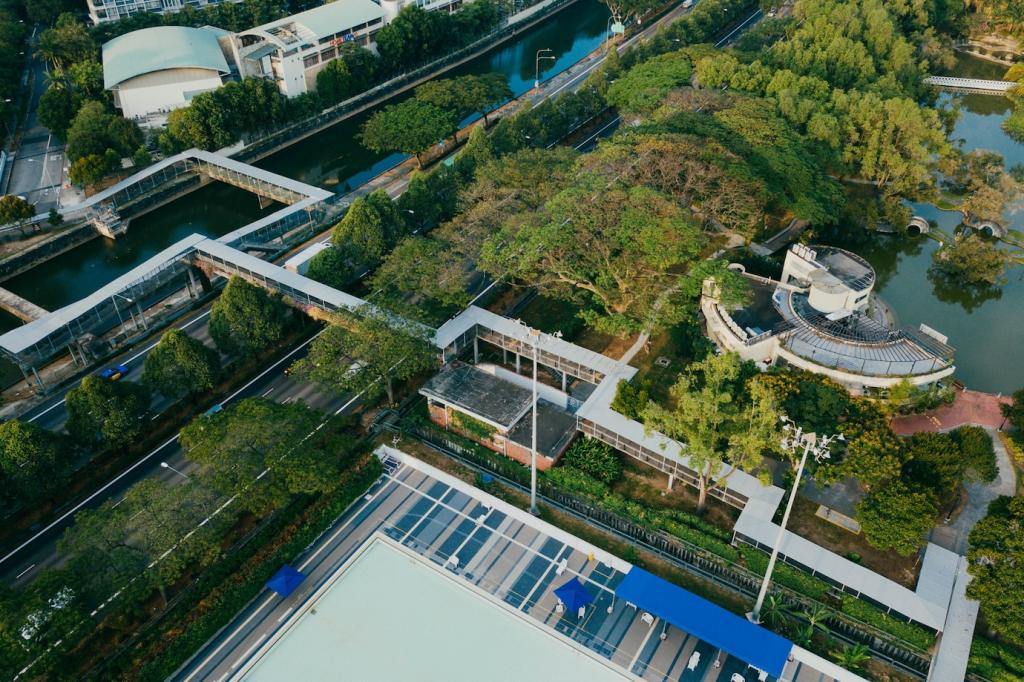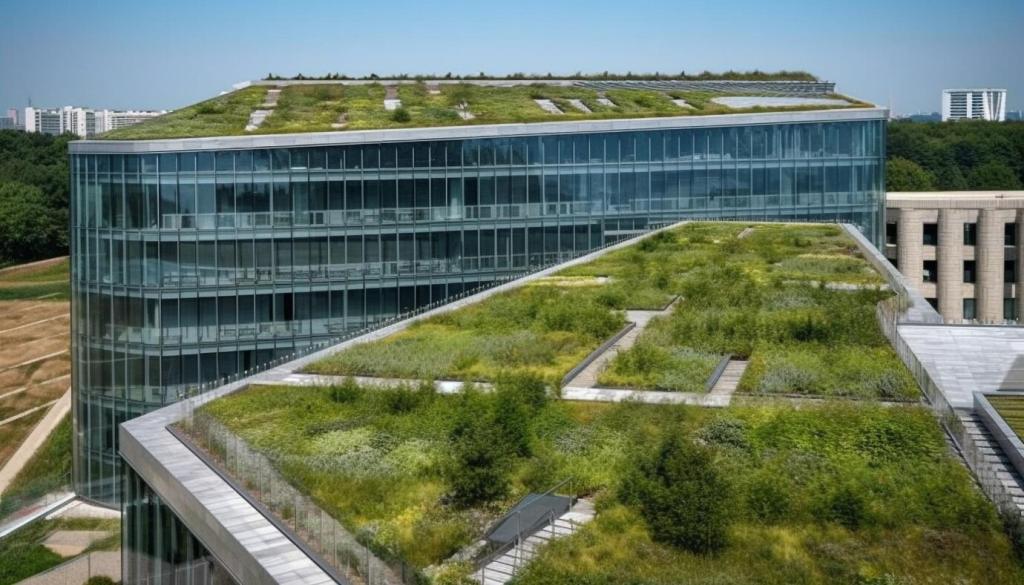The Role of Nanotechnology in Green Building
Nanotechnology is revolutionizing the construction industry by offering innovative solutions to enhance the sustainability, efficiency, and durability of green buildings. Through the manipulation of materials at the nanometer scale, scientists and engineers are developing smarter building products, more energy-efficient systems, and surfaces that reduce maintenance and environmental impact. As the world moves toward more eco-friendly construction standards, the integration of nanotechnology in green building practices stands out as a pivotal development, influencing how structures are designed, built, and maintained for a greener future.

Nano-Insulation for Superior Thermal Performance
Nano-insulation technologies, including aerogels and vacuum-insulated panels, are transforming the way buildings retain or expel heat. These materials, engineered at the nanoscale, significantly reduce heat transfer, creating better barriers against temperature fluctuations. By incorporating nano-insulation into wall panels, roofs, and windows, builders can achieve unprecedented energy savings. This not only lowers utility costs for occupants but also sharply reduces greenhouse gas emissions associated with heating and cooling. As these materials become more affordable and their integration more seamless, nano-insulation is expected to become a standard component in green construction, allowing new and retrofitted buildings to exceed traditional energy efficiency standards.

Smart Nanocoatings for Windows and Surfaces
Nanotechnology-based coatings applied to windows and building surfaces offer intelligent control over light and heat transmission. These smart nanocoatings can adapt to environmental conditions, such as sunlight intensity, by regulating the amount of solar radiation that penetrates the building envelope. During summer, they reflect excessive solar heat, keeping interiors cooler and minimizing the need for air conditioning. Conversely, in winter, they can help trap warmth inside. The result is a substantial decrease in year-round energy demand. The versatility and adaptability of nanocoatings make them a game-changer for sustainable architecture, enabling buildings to dynamically respond to their surroundings without the need for complex mechanical systems.

Nanoengineered Solar Cells for Renewable Energy Integration
Nanotechnology is advancing the efficiency and applicability of solar power in green buildings. Nanoengineered solar cells are lighter, flexible, and can be integrated into different building components, including facades, roofs, and even windows. These new-generation photovoltaic solutions harness more sunlight and convert it into electricity with greater efficiency compared to traditional panels. By enabling renewable energy production on-site, buildings can achieve net-zero or even positive-energy status. This not only reduces dependence on fossil fuels but also transforms buildings from passive energy consumers into active energy producers, a key principle of sustainable urban development.

Nanoparticle-Infused Air Purification Systems
Nanoparticle-infused filters and air purification systems are a breakthrough in maintaining clean indoor air. These systems utilize nanomaterials with large surface areas and unique reactivity to capture or neutralize toxins, allergens, and particulate matter that traditional filters may miss. For example, titanium dioxide nanoparticles, when activated by light, can degrade volatile organic compounds and odors at the molecular level. By integrating such advanced purification technologies into HVAC systems, green buildings ensure a constant supply of purified air, thereby reducing health risks and enhancing comfort for occupants, particularly those sensitive to pollutants.

Antimicrobial Nanocoatings for Surfaces
High-contact surfaces in buildings, such as doorknobs, handrails, and countertops, are common hotspots for the transmission of bacteria and viruses. Antimicrobial nanocoatings provide a proactive solution to this challenge by continuously inhibiting microbial growth. Silver, copper, and zinc oxide nanoparticles have proven effective in destroying a wide variety of pathogens without harmful side effects. When applied to interior surfaces, these coatings reduce the need for harsh chemical disinfectants and minimize maintenance. This intrinsic antimicrobial protection not only supports green cleaning practices but also promotes a healthier, safer indoor environment, aligning with the objectives of green building certifications.

Photocatalytic Nanomaterials for Self-Cleaning Surfaces
Photocatalytic nanomaterials, such as titanium dioxide, are being used to create self-cleaning and air-purifying surfaces in green buildings. When exposed to sunlight or certain artificial light frequencies, these materials break down organic pollutants and prevent the buildup of grime. This self-cleaning capability reduces maintenance frequency, conserves water, and eliminates the need for chemical cleaners that can contribute to indoor air pollution. The use of photocatalytic nanomaterials on exterior facades and interior finishes not only extends the lifespan of building surfaces but also sustains high standards of cleanliness and air purity, supporting the broader goals of sustainable and healthy building design.
Advancing Structural Durability and Resource Efficiency
Nano-Enhanced Concrete and Cement
Traditional concrete is highly resource-intensive and prone to cracking over time. By integrating nanoparticles—such as nano-silica, carbon nanotubes, or graphene—into concrete mixes, the resulting material exhibits improved strength, reduced permeability, and enhanced durability. Nano-enhanced concrete resists chemical attacks and mechanical stresses more effectively than conventional concrete, resulting in longer-lasting structures that require less maintenance and fewer repairs. This directly lowers the overall carbon and resource footprint of construction, as fewer materials are needed over the building’s life. The adoption of nano-enhanced concrete is a key innovation enabling the next generation of long-lasting, sustainable infrastructure.
Nanoclay-Modified Paints and Coatings
The inclusion of nanoclay particles in paints and coatings has ushered in new possibilities for protective and decorative finishes in green buildings. These nanoclays impart enhanced barrier properties, making surfaces more resistant to moisture, UV radiation, and abrasion. As a result, building exteriors and interiors enjoy longer-lasting finishes that maintain their appearance and protective function for extended periods. Reduced fading, peeling, and the need for frequent re-painting contribute to substantial resource savings and lower emissions associated with paint production and application. Nanoclay-modified coatings embody the principle of doing more with less—an essential aspect of sustainable building philosophy.
Lightweight Nanocomposites for Structural Applications
Nanocomposites that blend nanoscale reinforcements with conventional materials are paving the way for lighter yet stronger construction components. These composites, which may contain carbon nanotubes, nanofibers, or nanoclays, enable builders to create beams, panels, and other elements with superior load-bearing capacity and resilience. The reduced weight of these components decreases the energy needed for transportation and installation, while their strength allows for innovative architectural designs. By optimizing resource use and enabling smarter structures, lightweight nanocomposites support both the functional and sustainable aims of green building.
